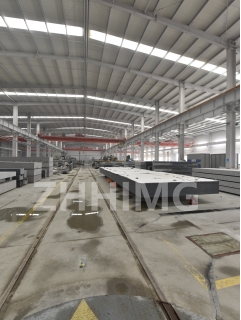Granite bed is one of the most common materials used in the manufacture of high-precision semiconductor equipment. It is a rock that is formed by the slow and solidification of magma deep within the earth's crust. A key feature of granite is that it is a hard, dense, and durable material, which makes it perfect for use in the construction of machine bases and beds.
The main components of a granite bed include feldspar, quartz, and mica. Feldspar is a group of rock-forming minerals that are commonly found in granite. It is the most abundant mineral in granite, and its presence in the rock gives it a coarse texture. Quartz is another mineral that is abundantly found in granite. It is a hard and brittle mineral that can withstand high temperatures, making it perfect for use in high-precision applications. Mica, on the other hand, is a soft mineral that forms thin and flexible flakes. Its presence in granite helps to provide stability and prevents cracking.
The use of granite bed in semiconductor devices has several benefits. Firstly, it provides an extremely stable and flat surface for the semiconductor wafer to rest on. This, in turn, allows for more precise manufacturing processes since any slight deviations or variations in the bed's surface could lead to errors or malfunctions in the semiconductor device. The hardness of the granite bed also means that it is less likely to be damaged or deformed over time, ensuring the ongoing stability of the equipment.
Another advantage of using a granite bed in semiconductor devices is that it has a low thermal expansion coefficient. This means that it can withstand changes in temperature without affecting the performance of the semiconductor device. As such, semiconductor manufacturers can conduct processes that require high temperatures without worrying about thermal expansion or contraction. Furthermore, it prevents the growth of thermal gradients, which can be detrimental to the performance of the equipment.
Conclusion
In conclusion, the use of granite bed in semiconductor devices has revolutionized the industry, leading to the development of more efficient and precise equipment. The granite bed's main components, including feldspar, quartz, and mica, ensure that the bed is hard, stable, and has a low thermal expansion coefficient. This makes it ideal for the construction of machines that require high precision, such as those used in the production of semiconductor devices. The use of granite bed will continue to be a crucial component for decades to come, as manufacturers strive to develop even more sophisticated semiconductor devices.
Post time: Apr-03-2024

